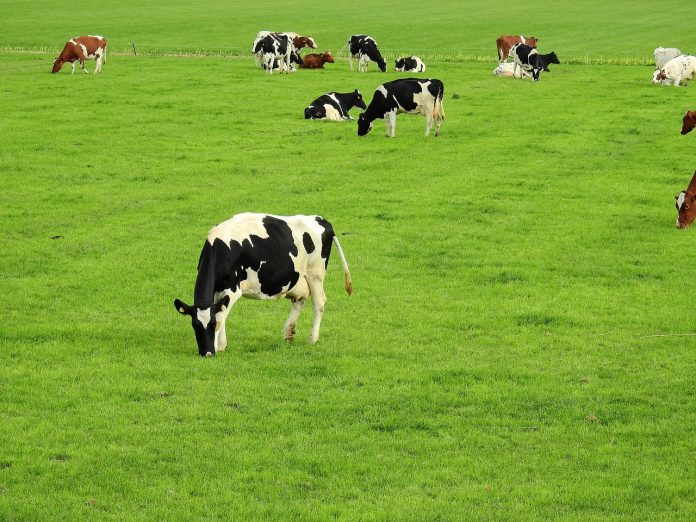As I sit down to write this article on rumination in dairy cows, I am reminded of all the times my mother told me to spit my gum out. Gum is no fun if you can’t chew it, but then chewing outside of having food in your mouth reveals that you most likely have gum in your mouth, even if you’re not supposed to, given the occasion.
I also am reminded of when my son was in wrestling in junior high and the coach encouraged them on weigh-in day to chew gum and spit as a weight-loss measure — by the way, my wife informed the coach about her displeasure of this strategy.
Cows chewing their cud is a good thing, but we don’t want them to lose their saliva. Rumination by dairy cows is important for: Reducing size of feed particles, especially forages, to increase digestibility; for secretion of saliva for moistening the feed as it is chewed and in buffering the rumen to keep pH near 6.5; and it has been determined that rumination time (RT) is reflective of animal health.
More efficient
Determination of RT used to be more difficult, but technology attachable to the ear or neck of cows today can provide these data daily on every cow. Certainly, dietary composition and feeding practices can affect the amount of RT, including amount of fiber in the diet, quality and type of forages, digestibility of the feed, and particle size of forages.
Changes in dietary factors can affect RT at any time; however, monitoring RT as an indicator of animal health status is most important during the transition period, especially given that most of the diseases experienced by dairy cows occur within the first 30 days in milk.
A recent study published in the Journal of Dairy Science was conducted at the University of Florida with the aim to investigate the impact of heat stress on the magnitude of changes in RT during the transition period.
The researchers monitored 205 Holstein cows equipped with a neck collar containing rumination loggers. The hot season was regarded as June through September and the cool season as November through April.
The RT was monitored from 14 days prior to and post-calving. Healthy cows had a lower RT during the summer (428 min/day) than during the cool season (447 min/day), but RT was similar between healthy cows by season after calving (448 min/day).
Dry matter intake
The RT decreased for all cows on the day of calving, which is expected due to a decrease in dry matter intake, and during the 24-hr period, RT was highest during 8 p.m. and 4 a.m. Hot-season calvings, but not cool-season calvings, had lower RT prepartum and postpartum in cows affected by severe negative energy balance and subclinical ketosis.
Dystocia during the hot season was associated with lower RT prepartum; for cool-season calvings, cows with dystocia had reduced RT postpartum. Lower RT occurred in cows with ketosis prepartum and postpartum in both the hot and cool seasons.
The RT was reduced postpartum in cows with hypocalcemia and mastitis that calved during the cool season, and RT was lower in cows with metritis in both the hot and cool seasons.
Thus, the effect of heat stress on RT in conjunction with disease varied by disease, but it is important to note that RT was reduced by ketosis, dystocia, hypocalcemia, mastitis and metritis during some portion of the transition period for all cows experiencing disease.
Deviation
One of the important things to observe on a given farm is a deviation from a normal baseline for healthy cows on your farm. On average, cows should ruminate seven-nine hours/day, eat four-five hrs/day, be two-three hrs/day in the holding pen depending on whether they are being milked two or three times a day, and lying comfortably for 12-14 hrs/day.
Most of the ruminations occur while the cow is lying. Many cows today are wearing fitness technology, but it’s up to us to monitor it to make sure we are facilitating a comfortable environment, adequate diets, and providing early response to health alerts.












